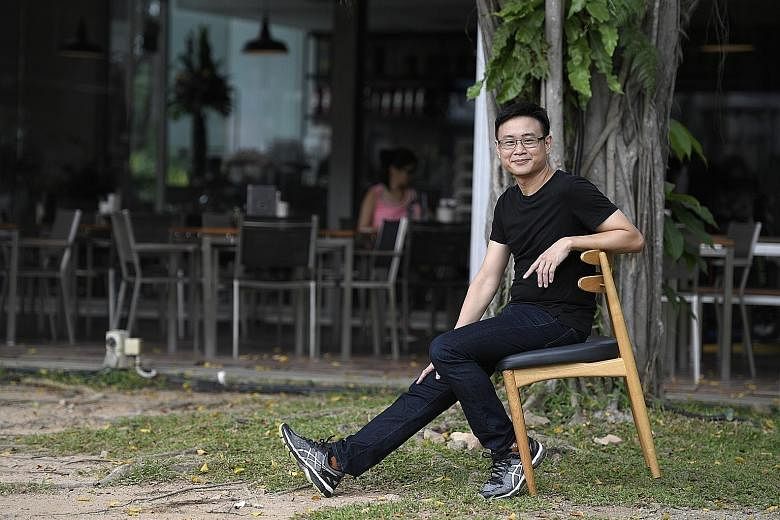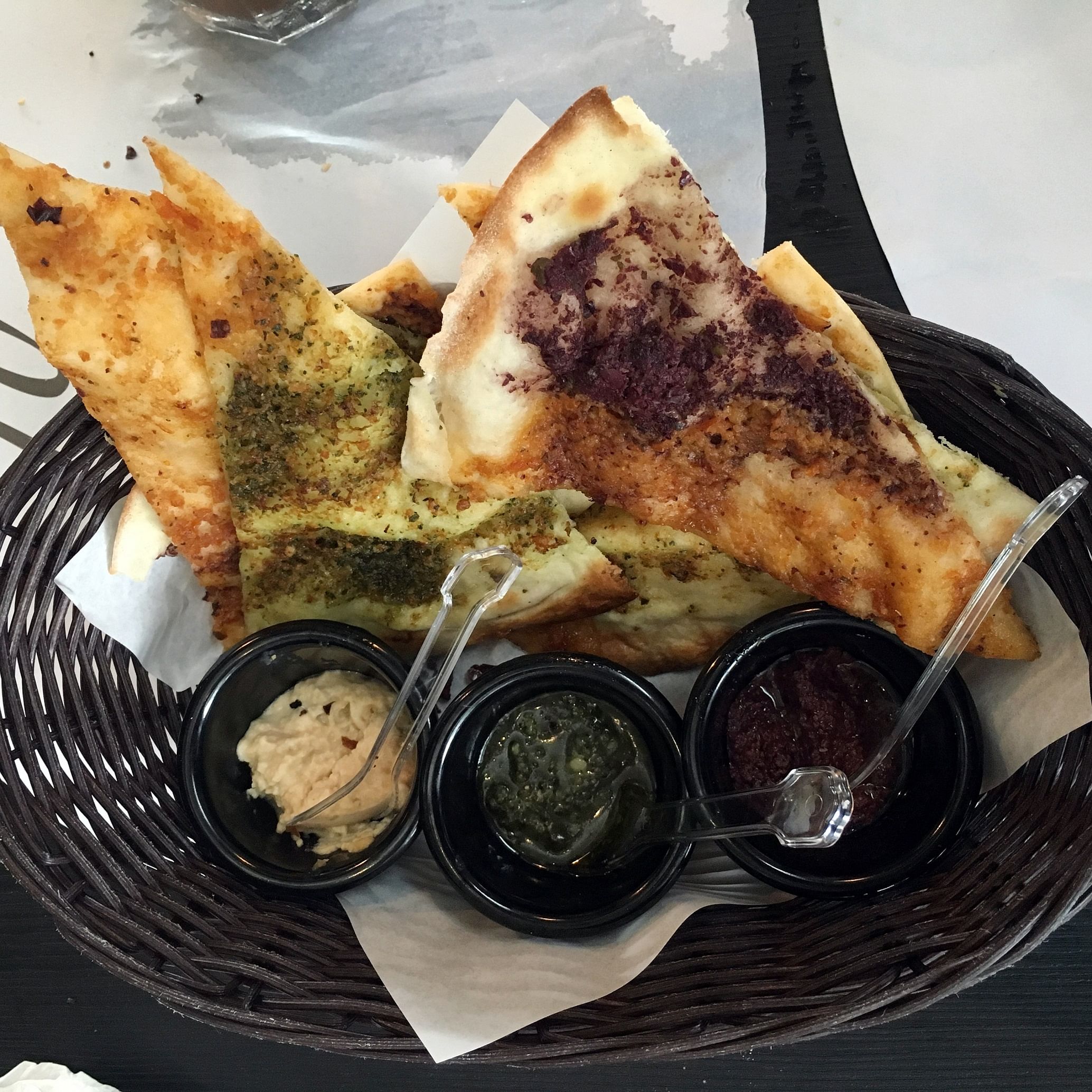It's 10 minutes past our arranged time and I'm starting to worry that Sonny Liew has forgotten about our appointment.
The creator of the hit graphic novel The Art Of Charlie Chan Hock Chye has chosen Cafe Melba at Goodman Arts Centre for lunch.
Luckily, he arrives soon after. He's carrying a hardcover French translation of Charlie Chan which he gives me. I've also brought along my own copy of Charlie Chan, in English. He smiles when he sees it.
In jeans, T-shirt and running shoes, Liew, 42, could pass off as someone in his 20s.
At our one-hour lunch, he is genial, unassuming and likeable. He listens attentively to questions and speaks gently.
But while he is mild-mannered in person, his book is anything but.
The Art Of Charlie Chan Hock Chye is an explosive 316-page comic book of Singapore's political history as seen through the eyes of Charlie Chan, a fictional artist of satirical comics.
It focuses largely on the 1950s and 1960s when the People's Action Party (PAP) rose to power and meshes fiction and fact.
In 2015, on the eve of its launch, the National Arts Council (NAC) withdrew its $8,000 publishing grant for the book. It said the "retelling of Singapore's history... potentially undermines the authority of legitimacy of the Government and its public institutions", and breached funding guidelines.
Whether or not you agree with its version of Singapore history, there is no denying the book's brilliance and the creator's talent.
The work is a dazzling mix of stories within stories, history, pop culture and drawing styles.
Cafe Melba, which has a big patio overlooking a field, serves Australian-Asian dishes.
I get rosti and lemonade. Liew, who has been a vegetarian since a general paper class on animal rights at Victoria Junior College (VJC), opts for just pizza bread and an iced mocha.
Have you ever veered from being a vegetarian, I ask?
"There were times when I was in the UK when I bought what I thought was vegetarian food. I couldn't afford to throw food away though, so I ate it anyway," he says. He read philosophy at Clare College in Cambridge University.
I'm intrigued by his fascination with Singapore's early political history. Aren't the events of the 1960s more from your father's generation than yours, I ask?
He's always been interested in history, he says, picking at his bread.
"When I was reading about the history of Singapore, it was clear the most exciting part was the whole struggle for Independence and the PAP's emergence through to merger and Separation," he says.
"After those years, despite recessions and everything else, there was never quite the same sense of drama to the Singapore Story."
The PAP, too, has always described that period as a critical point in Singapore's history, he points out. Anyone writing about Singapore would find it impossible to avoid that part of its history.
"It's more a question of whether you accept or question the mainstream narrative."
I suspect that some of his interest has to do with how he was born in Malaysia but grew up here. This has allowed Liew, now a Singaporean, to view Singapore through an outsider's eyes too.

In fact, he describes himself as a "Causeway child".
When he was five, his Singaporean mother brought him and his older sister to live here and attend school. He went to Maha Bodhi then Victoria School and VJC. His Malaysian father, a doctor, remained in Seremban.
I wonder if he felt more Singaporean or Malaysian. "A bit in between," he says.
While he did school here, " I didn't do NS and go through the rites of passage and bonding that NS supposedly brings. I remember my friends talking about army life all the time during their weekends out of camp, and feeling a bit left out at the time".
He became a Singaporean about five years ago. There were several reasons, he says.
One was the 2011 General Election. "It was the first election where social media seemed to play a bigger role. I felt engaged with and connected to people who had similar mindsets," he says.
"When the elections came, some of my friends went to help out at the counting centres, and that was something you could only do as a Singaporean, not as a PR, and I thought I would want to get more involved in the next elections."

The other reason was Charlie Chan. "I knew I was going to do this book and I wondered half-seriously if they would withdraw my PR when it was published."
But why would your PR be withdrawn because of Charlie Chan, I ask. It's just a book.
He refers to the NAC's revoking of his funding and says: "I think it's the whole idea of questioning the mainstream narrative."
He acknowledges that tensions between artistic freedom, state support and censorship aren't easy to resolve. "But the danger is that if the NAC is not able to support works with artistic merit because of political issues, we'll end up losing important creative voices," he contends.
Charlie Chan the detective character in pop culture would seem to be the obvious reference for his character's name. But Liew was actually inspired by the Wayne Wang movie Chan Is Missing.
In it, two friends of the titular character go round looking for him and discover different aspects of who he was. Similarly, his book is about different perspectives on Singapore's history, he says.
In terms of physical appearance, Charlie Chan was modelled after a friend's father. "But his journey and his life were all cobbled together from different sources."

These include artists in Singapore during the 1950s and 1960s who did woodcut prints and cartoons which were very political in nature.
Elsewhere, the struggles of comics creators like Wally Wood provided templates to draw on.
He lets on that Hock Chye was tagged on to Charlie Chan because it "sounded right". He later learnt that while Chan is Cantonese, Hock Chye is Hokkien. "So actually it should be Charlie Tan Hock Chye," he says with a laugh.
"There were other errors," he says. " I was told that Milo didn't come along till the 1980s and people back then would have drunk Ovaltine instead." Such quirks, though, make the book "more interesting on some level".
Actually, I didn't find Charlie Chan particularly likeable.
I wonder out loud: Do you like Charlie Chan?
"Do I like Charlie Chan?" Liew repeats, sounding incredulous.
He considers the question for a while more, then says: "I suppose I have empathy for him given his struggles as an artist and in life generally."
I mention later that Charlie Chan seems quite a cantankerous fellow.
He concedes: "Ya, in fact some of my friends who read the drafts told me, 'Can't you make him more sympathetic?' But I thought the whole point was to make him interesting rather than nice."
He adds: "I suppose it also made sense for him to turn out to be a somewhat cranky old man after all his experiences."
In the book, Charlie Chan meets commercial setbacks and decides to stay true to himself by working as a night watchman, which allows him time to pursue his art.
In contrast, his friend Bertrand Wong, who was a partner in their youthful comics venture, becomes a businessman.
I suppose Bertrand Wong is the character that copped out, I say.
Liew corrects me gently: "Well, the realist, so-called."
I ask if he knows people like Bertrand Wong.
"A lot of Singaporeans I think are realist in that sense," he says.
"They recognise the Government has done a lot of good and therefore accept the bad that goes along with it."
How much of himself is in Charlie Chan? "Some of it is borne from my own experiences, but not enough to make him just be a stand-in for me," Liew says.
He's more of an amalgamation drawn from many sources. The struggles Charlie Chan faced were common for comics artists of that era, when contracts weren't really fair to artists. "Even those who were initially successful often ended up struggling financially later in life."
Staying the course in pursuing a full-time career in comics is something Liew has wrestled with.
Three or four years ago, he felt his career hitting a plateau. He was doing work for hire rather than getting opportunities to create his own books.
Charlie Chan was a reaction to that - a "moonshot" to try to do something he really believed in. Even if it meant living off savings for a while, he wanted to complete the book and see where it took him.
Well, it has taken him far.
It has brought him mainstream attention. It was the first graphic novel to win the Singapore Literature Prize's English Fiction award and has sold about 15,000 copies in Singapore.
It made Amazon's and The New York Times' bestseller lists and has sold 8,000 copies in the United States. Besides French, Italian and Spanish versions are on the way.
"Over time with the foreign sales and royalties, it's done quite well. Not anywhere near Harry Potter or Fifty Shades, but for the kind of book it is, it's done really well."
Liew, whose girlfriend is an artist and designer, has sold a few pieces, mostly working sketches, from the book. But he still has at least 95 per cent of the original pages.
"I'm quite attached to the pages. Everything has a price of course, but I'm not in any hurry to sell them," he says.
What about merchandising? Why not T-shirts, mugs, watches, calendars? I could just visualise a whole Charlie Chan universe.
I sense him wince.
He says that Bill Watterson, the creator of Calvin and Hobbes, has resisted merchandising his whole career, but also admits "most of us don't have that luxury".
He's not above merchandising, he clarifies.
"If someone offers significant amounts of money for the rights, it'd be hard to turn down. But there'll always be a tension there, a fear of losing a work's integrity."
He's currently researching on capitalism and working on something which could be based in the Hong Kong of the 1980s.
We're done with lunch - my rosti was nice and crispy; he has hardly touched his bread.
Liew has a studio at Goodman Arts Centre. The ST TV producer, videographer and I follow him back there to take a look.
It's a fascinating place overflowing with books and artworks. He graciously autographs the two Charlie Chan books for me.
As we take our leave, he grabs some Charlie Chan key chains and passes them to us, muttering something about how they aren't very well-made and that the plastic might crack.
But we love the key chains. They are a keepsake to treasure.
I know he is wary about over-commercialising his art, but I think being a realist on this score isn't a bad thing.
It just means sharing Charlie Chan - his labour of love - with more people, and what's so wrong with that?



